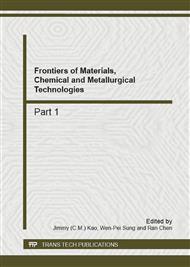p.677
p.681
p.685
p.689
p.694
p.698
p.702
p.706
p.710
Study on Kinetics of Reaction between ZrNi5 and Water Vapor
Abstract:
In order to evaluate the feasibility of tritium recovery from tritiated water by thermochemical decomposition using ZrNi5, the kinetics of reaction between ZrNi5 and water vapor was studied by thermogravimetric method in the temperature range from 673K to 823K. The result shows that reaction rate increased significantly with the increasing of temperature and H2O concentration; the reaction mechanism for ZrNi5 can be described by the first-order chemical reaction, and the reaction is first order for H2O concentration. The reaction activation energy of ZrNi5 is 55.8kJ/mol calculated from the Arrhenius equation.
Info:
Periodical:
Pages:
694-697
Citation:
Online since:
October 2012
Authors:
Keywords:
Price:
Сopyright:
© 2012 Trans Tech Publications Ltd. All Rights Reserved
Share:
Citation:


